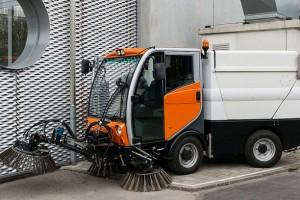Sanitation vehicles are taking the lead in spearheading the clean streets movement, actively contributing to the goal of cleaner, more attractive, and healthier urban environments. These vehicles play a vital role in maintaining cleanliness, enhancing public hygiene, and creating a positive visual impact within communities.
One key function of Sanitation Vehicles is the regular collection and removal of waste from streets and public spaces. Equipped with efficient waste compactors and storage systems, these vehicles ensure the prompt and thorough removal of garbage, preventing the accumulation of waste that can lead to unhygienic conditions and the spread of diseases. By actively maintaining clean streets, sanitation vehicles contribute to the overall well-being and quality of life for residents and visitors.
Moreover, sanitation vehicles are involved in additional street cleaning activities. Many vehicles are equipped with features like high-pressure water jets, vacuum systems, and sweepers to remove debris, dirt, and other pollutants from streets, sidewalks, and public areas. By effectively tackling litter and dirt, these vehicles contribute to a cleaner and more visually appealing urban environment. Clean streets not only foster a sense of pride and community but also create a positive first impression for tourists and visitors, supporting local businesses and boosting the local economy.
Sanitation Vehicles also play a crucial role in responding to specific cleanliness challenges and events. During festivals, parades, or public gatherings, these vehicles are deployed to maintain cleanliness and promptly handle waste management requirements. By ensuring efficient waste collection and cleanup operations, sanitation vehicles enable smooth and enjoyable public events while minimizing the environmental impact associated with such gatherings.
Additionally, sanitation vehicles are actively involved in graffiti removal efforts. By equipping vehicles with specialized cleaning agents and high-pressure washing systems, these vehicles aid in the eradication of graffiti, enhancing the visual appeal of streets and public spaces. This contributes to a cleaner and safer environment, discourages vandalism, and promotes a sense of pride and ownership among residents.
The hydroforming process can be easily automated, allowing for high-volume production with consistent quality.
Automotive manufacturers increasingly rely on Automotive Hydroformed Parts to meet stringent industry standards and regulations.
In conclusion, sanitation vehicles are at the forefront of the clean streets movement, playing a vital role in maintaining cleanliness, enhancing public hygiene, and improving the visual appeal of urban environments. Through regular waste collection, street cleaning activities, event support, and graffiti removal efforts, these vehicles actively contribute to creating cleaner, more attractive, and healthier communities
